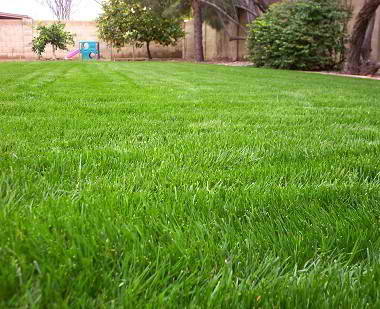Growing turfgrass in shade is a major problem for many homeowners because an estimated 20 to 25 percent of all grassy areas in the U.S. are shaded to varying degrees. While it’s not always advisable to try to maintain beautiful grass in all shaded conditions, the following five-steps are recommended to maximise turf in shade areas.
Step 1: Make an informed choice about the likelihood of success. Even the most shade tolerant grasses need at least 50 percent sunlight or a minimum of four hours of sunlight daily to survive. Pruning a tree’s canopy and its lower 8 to 10 feet of limbs will allow more sunlight to reach the ground, but it may be destructive to the tree or spoil its natural appearance. If you can’t achieve minimal sunlight for grass, switch to a more shade tolerant ground cover.
Step 2: Select the most shade tolerant grass species possible for your climate. Not all grasses are created equal, especially when it comes to light requirements. Various independent researchers have concluded the following rankings for shade tolerance: For warm season grasses (starting with the most tolerant) – St. Augustinegrass; Centipedegrass; Zoysiagrass; Bahiagrass; Carpetgrass; Bermudagrass. For cool-season grasses (most shade tolerant first) – Fine fescue; Bentgrass; Rough bluegrass; shade tolerant cultivars of Kentucky bluegrass; Tall fescue; Perennial ryegrass; and non-shade tolerant cultivars of Kentucky bluegrass. (Consult with an Extension Specialist, Master Gardener, top-quality garden centre or professional turfgrass sod producer in your area for their specific cultivar recommendation that should also include considerations for maximum and minimum temperatures and disease factor).
Step 3: Select trees that compliment turf’s presence. Trees with dense canopies and/or shallow root systems may create problems for turf. Avoid maples, oaks, magnolias, elms and sweet gums because of their dense canopies and steer away from beeches, maples and willows because of their shallow root systems. The open canopies of trees such as poplars, birches, pines, locusts and ginkgo’s can work well with grass.
Step 4: Adjust turf maintenance practices to maximize the chances of success Water early in the morning and infrequently, applying enough water at a single time to moisten the soil five to eight inches deep. This approach will reduce the potential outbreak of turf diseases that thrive in damp, shady areas. Mow at a minimum height of 2 ½ to 3 inches, with a sharp blade, removing no more than the top one-third of the grass blades. Most heavily shaded grass grows more up-right and stringy to increase the leaf surface and capture any available sunlight. Cutting at a greater than normal height allows this phenomenon to continue. Fertilize at half rates of nitrogen, compared to the sunnier areas of the lawn, and increase potassium rates. Nitrogen encourages succulence that can decrease wear tolerance and increase disease susceptibility, while potassium can improve both conditions. Herbicide applications should rarely be used because this will place yet another stress on already less than ideal growing conditions.
Step 5: Reduce heavy use of the shaded grass areas as shaded grass plants are fragile and it does not take much to tear out their shallow root systems, or otherwise damage the plant beyond its ability to recover. Limiting heavy use of these areas will give the grass more opportunities to battle other shortcomings with which it is already. One final suggestion is to simply plan to re-sod heavily shaded areas every few years, as part of the yard’s overall maintenance and improvement plan. Stripping off the nearly non-existent grass and replacing it with dense, mature turf can immediately refresh a shady area. Accepting the fact that even the most shade tolerant grasses will thin-out over two to five years and planning to re-sod at that point can accomplish a homeowner’s dream.

